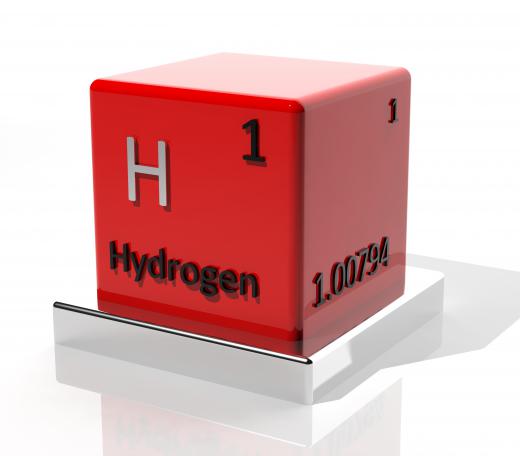A hydrogen sensor is a device that can detect the presence of hydrogen gas. Since hydrogen naturally occurs in extremely small amounts in the atmosphere, around 0.00005% by volume, these sensors are designed to detect amounts that might be regarded as dangerous. A gas detector for monitoring hydrogen is most often used to detect leaks of this gas from closed systems. Hydrogen sensors are also finding a niche in the new but growing hydrogen fuel cell industry.
Numerous technologies for hydrogen sensor design are in use today. Most make use of the fact that hydrogen is fairly active chemically. One type of sensor, for example, utilizes palladium. As palladium comes in contact with hydrogen atoms, it spontaneously forms a compound called palladium hydride, which is less conductive than the pure metal. By measuring changes in the conductivity of the palladium in the sensor, the concentration of hydrogen in the air can be calculated. Advanced hydrogen sensors can be very small, with dimensions measured in millimeters or fractions of an inch and can detect concentrations of hydrogen gas as low as 5 parts per million (ppm) within seconds.

Hydrogen is potentially dangerous. It can be flammable and even explosive at concentrations above 40,000 ppm. The famous explosion and burning of the Hindenburg in 1937 illustrated just how dangerous this gas can be. The large airship, filled with hydrogen gas, caught fire and exploded and crashed to the ground, resulting in 36 fatalities. The fame of this accident caused airships to fall out of favor as transportation. A need for hydrogen sensors as a safety measure was seen as a result of this and other accidents involving fires and explosions.

In 2011, a hydrogen sensor will most likely be used in one of three applications. Portable hydrogen sensors are gas detectors that inspectors or technicians can use to spot check any system that holds, transmits, or utilizes hydrogen gas for leaks. These sensors, which are typically small, hand-held units, can be purpose-built only for hydrogen detection or can be multi-gas detectors capable of detecting several types of gases, depending on the settings.
A static hydrogen sensor is likely to be placed in a building or other enclosed space. This type of hydrogen sensor works in the same way as a hand-held unit but is linked to some type of monitoring system that may include alarms. In these applications, hydrogen sensors serve to detect a build up of the gas above normal atmospheric levels before it becomes dangerous.
Hydrogen fuel cells are an emerging technology field that essentially uses hydrogen as a fuel. Under controlled conditions, hydrogen provides a great deal of energy when burnt and is the ultimate green fuel, as the by-product of hydrogen combustion is pure water. Many companies are working on vehicles that use these cells for power. Hydrogen leaks can be dangerous in fuel cells as well, and hydrogen sensors are installed in any vehicle, machine or device that uses a hydrogen fuel cell for power.
